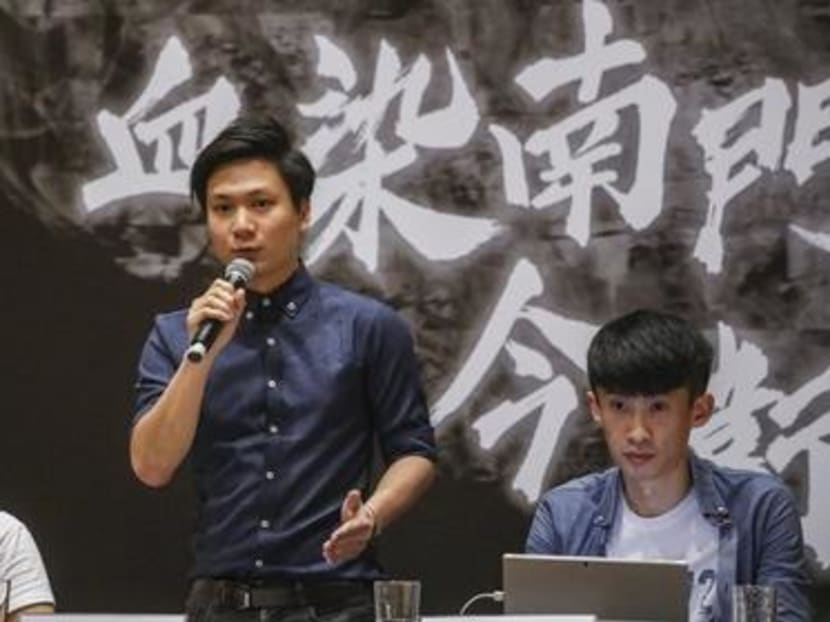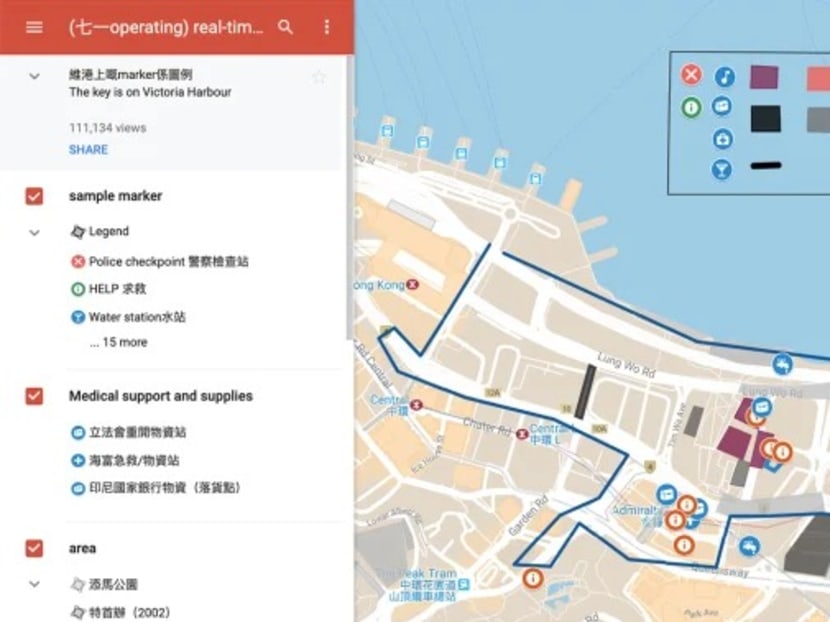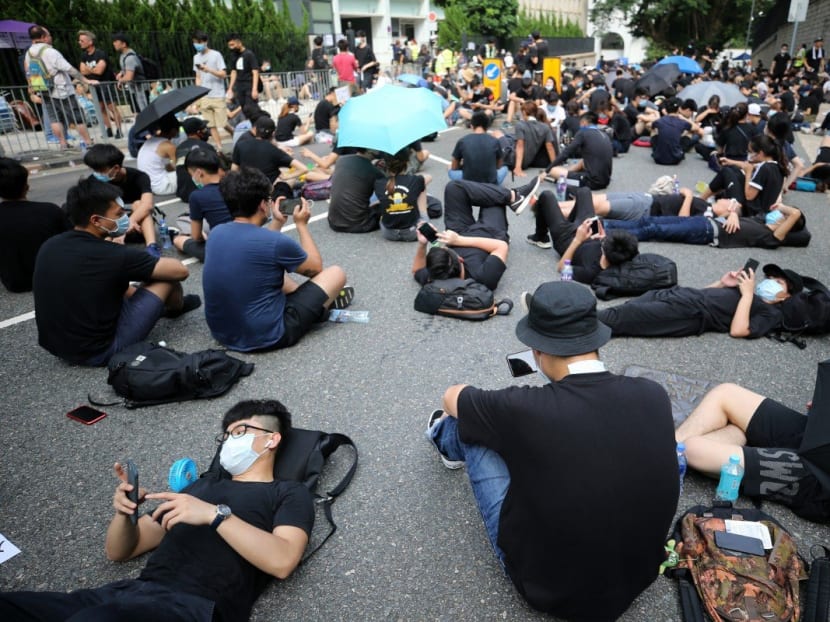How Hong Kong protesters mobilised millions
Hong Kong’s protesters have drawn inspiration from actor Bruce Lee’s famous quote: “Be water, my friend.”
HONG KONG — What began as a protest against an extradition bill has grown into a battle over the future of Hong Kong — and a rare instance of popular defiance against President Xi Jinping’s increasingly authoritarian China.
On July 1, the anniversary of the handover of Hong Kong from British to Chinese rule, protesters stormed the city’s legislature, smashing through windows and ransacking the heart of government in unprecedented scenes that were broadcast around the world.
They blame the shift in tone both on chief executive Carrie Lam’s botched handling of the proposed law and an aggressive police response in recent weeks.
After the leaders of Hong Kong’s 2014 pro-democracy Umbrella Movement — the last time the city was hit by major demonstrations — were locked up, today’s protesters have drawn inspiration from Hong Kong actor Bruce Lee’s famous quote: “Be water, my friend.”
It is an allusion to a nimble, leaderless way of organising that has echoes in other movements around the world including France’s gilets jaunes, protests in Sudan, Occupy Wall Street and the Arab Spring. We look at how Hong Kong’s protesters have organised.
DECENTRALISED LEADERSHIP
In contrast to the Umbrella Movement which had clear leaders such as student activist-turned-politician Joshua Wong, figureheads have not emerged this time.
This is a tactical decision, organisers say. It means Beijing cannot go after any particular individual.
“We’ve learnt our lessons from the Umbrella Movement,” Mr Wong told the Financial Times after he was released from jail for his involvement in the 2014 protests on June 17.
“This organic movement means the government now faces even more uncertainty about what we will do next,” he added.
Groups such as the Civil Human Rights Front, which has long organised annual rallies in Hong Kong, have received widespread media coverage, though they emphasise that their role is to ensure actions are legal and safe rather than spearheading the recent protests.
“When some people suggest, for example, more radical things, we can neither encourage nor discourage them,” said Bonnie Leung, the group’s vice-convener.
Wayne Chan, the 29-year-old convener of the small, pro-Hong Kong independence Students Independence Union, supports the lack of leaders in the movement even as he acknowledges it can slow decision making.

Wayne Chan, convener of the Students Independence Union Photo: South China Morning Post
For the authorities, however, it is a source of frustration.
“Even if the government wants to make a deal with the protesters, they can’t because no one can represent all the protesters to strike [one],” said Jasper Tsang, the pro-Beijing former president of Hong Kong’s Legislative Council.
At a 4am press conference on Tuesday, Ms Lam said the government had already suspended the proposed law indefinitely but added she had “good reasons” not to respond to the protesters’ every demand.
“The bill will expire or the bill will die in July 2020 when the current [legislative council] term expires,” she said.
TECHNOLOGY FIRST
Rather than deferring to a figurehead, protesters organise using online platforms.
“Through these interactions, we vet and figure out who really has [found] the best strategies, who has the best people skills, who is really competent and then the culture and leadership flows from there,” said Janet Lui, who researches Hong Kong’s social movements.
While the Civil Human Rights Front uses Facebook posts and mainstream media to advertise weekend rallies, most protesters turn to anonymous online platforms.
The two most popular apps are messaging service Telegram and online forum LIHKG, Hong Kong’s answer to Reddit, which was used to send out alerts to users on Monday night warning the police were about to storm the legislative building.
Telegram, like WhatsApp, provides a basic messaging service. It also has channels to which thousands can subscribe in order to get instant updates from other members.
The channels allow protesters to conduct polls and to co-ordinate in smaller groups about logistics, first aid, legal aid, design and strategy.

Protesters use the messaging platform Telegram to conduct polls on new actions
Telegram also has a self-destruct timer for messages.
“You can ensure your conversation isn’t leaked and you can hide your phone number, which is different from WhatsApp,” said the administrator of one Telegram channel for protesters with 35,000 subscribers, who spoke on condition of anonymity.
Many Telegram users try to protect their identities by using prepaid sim cards. But tech experts caution against placing too much trust in Telegram, which is not end-to-end encrypted by default.
The administrator of one Telegram protest group was also arrested in June. Telegram was also hacked by Beijing, according to its founder, on June 12 — the same day that clashes between protesters and police turned violent.

LIHKG was set up in late 2016 and is widely used by university students to discuss everything from gaming to dating. The ability to upvote popular topics means more widely accepted ideas about the next steps to take in the Hong Kong protests often trend at the top of the forum.
“LIHKG is a safe haven for people who don’t dare to speak up in real life and whose opinions may not be valued in real life because of their social status or background,” said a member who was one of the forum’s early adopters.
The protesters also use iPhone’s AirDrop function to anonymously and rapidly share information. After protesters broke into the legislature on Monday night, they began sharing floor plans of the multistorey building to other iPhone users.
GETTING CREATIVE
The spaces between organising online and offline in Hong Kong are often blurred. Hand signals were used to transmit messages through the crowds of thousands of people.
Protesters then drew sketches of them and then circulated the images on Telegram and LIHKG.

Hundreds of protesters participated in an “urban marathon” on June 25, hand delivering petitions to consulates of countries who attended the G20 summit in Osaka, Japan, asking them to defy China and discuss the recent protests in Hong Kong.
Activists also raised HK$6.7 million (S$1.16 million) in 10 hours to buy advertising space in international newspapers, such as the New York Times, to publish an open letter outlining their concerns about the law to coincide with the G20.
The co-ordination of logistics and supplies has also been decentralised. Supply stations have popped up wherever protests coalesce stocked with helmets, masks, safety goggles, bottles of water and saline solution, used to rinse away tear gas and pepper spray.
“These supplies weren’t bought by just one person, they trickled in bit by bit from all types of people,” said Christy, a 22-year-old university student who was manning a station during a 24-hour shift.
“Some people can’t go to the front line but they really want to help so they order supplies like construction helmets or boxes of water,” she said, adding there were also teams of volunteer van drivers to help with deliveries.
Hanging over the entire operation is the shadow of China’s surveillance state.
At one supply station, volunteers handed out masks. “Take the masks, protect your identity,” they told the crowd. For some, anonymity can provide cover for more radical action — like the storming of the legislature. But for most in Hong Kong, it is a reminder of what is at stake should the movement fail. FINANCIAL TIMES







